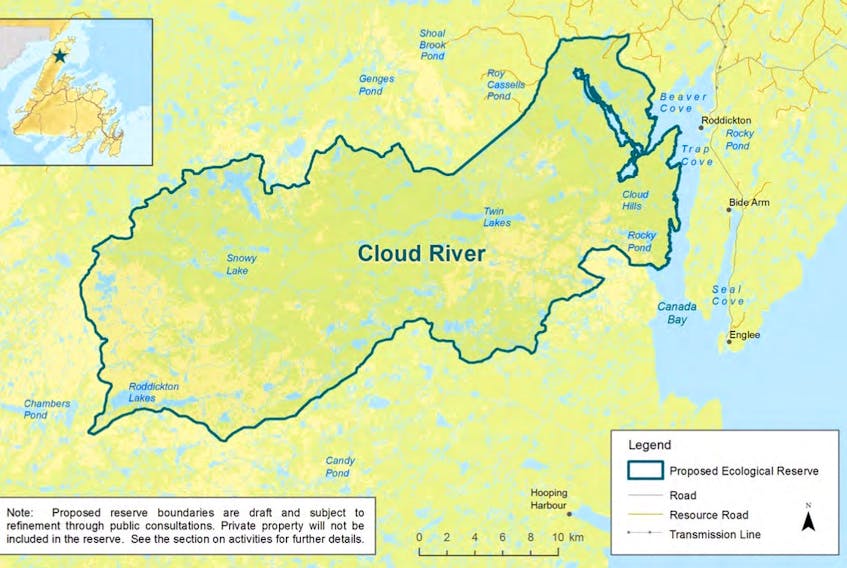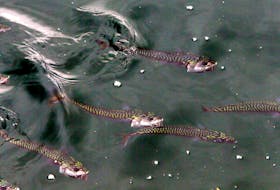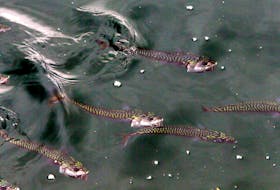CORNER BROOK, N.L. — There’s less than two weeks to go in the public consultation process on a plan to classify 32 areas on the island portion of Newfoundland and Labrador as protected areas, and those for and against the proposal are holding fast to their positions.
The plan, put together by the Wilderness and Ecological Reserves Advisory Council (WERAC), was released in May at the height of the COVID-19 pandemic. A large portion of the identified areas is on the Northern Peninsula, and that is where the greatest opposition comes from.
WERAC chair Graham Wood said the committee has not been allowed to have public meetings, which has been a major problem with the consultation process. Instead, it’s had to hold conference calls with stakeholders — organizations, groups, councils and joint councils — in the affected areas.
Hard sell
“There was a lot of misinformation put out,” Wood said.
He said people were talking about losing their cabins, and losing access to the land, not being able to pick berries or cut domestic wood.
“And really, none of that is true,” he said.
He spoke of areas on the Northern Peninsula, Corner Brook, Bras Mort Bog east of Stephenville Crossing and areas around St. George’s South and Stephenville.
“We see that these are special habitats that need to be protected.”
Only 6.9 per cent of the wilderness land in the province is protected. That includes national parks and wilderness areas. The province has had a goal since 1992 to protect 17 per cent by 2020.
Wood said it is now 2020 and government finally agreed to put out to the public the plan the committee has developed. That plan brings the total protected area up to only 12.5 per cent.
He said there’s still a way to go, and among the negative feedback there’s been positive reactions from other areas wanting to be included.
Message coming into final days
This first phase on consultations on the plan ends on Oct. 1 and Wood encourages people to get their comments heard.
As staycations and tourism grows, and people get to appreciate this province, Wood said, they need to understand it has to be protected.
“Once we get it protected and we develop management plans for each of those areas to make sure that the integrity is protected, they’ll still be able to access it," he said.
“We want the public. We’re not talking about closing off, putting a wall up and preventing people from going into these areas. We see that there’s a great amount of economic potential in terms of tourism.”
Wood said WERAC will use the information gathered in Phase 1 to suggest management approaches for each site. As the process moves to Phase 2, and depending on the situation with the COVID-19 pandemic, there will be more opportunities for the public to provide input on whether the boundaries need to change, what kind of management plan should be put in place, and what will be and what won’t be allowed.
Still not convinced
Sheila Fitzgerald is against the plan and has participated in the consultation process, and had only one word to say when asked if what she has heard changed her mind.
“No,” said the co-chair of the United Against WERAC Standing Committee and mayor of Roddickton-Bide Arm.
“I don’t feel that those meetings effectively met the needs of residents or certainly of councils.”
The feeling after the meetings she attended were that nothing changes, “because what we thought was in that report still remains the same,” she said.
“We need them to come to our communities, all the communities up here.”
She said that way people can look at the maps and talk about where their concerns are.
Fitzgerald said the people on the Northern Peninsula have been told they’ve done great, that the land is pristine and WERAC wants to help conserve it.
“We’re not saying we don’t want to protect the land and we don’t like conservation. We’re not saying that at all.”
Fitzgerald said the region is in a difficult place now and wants to be able to capitalize on opportunities with mineral deposits and forestry.
“From an economic perspective it’s been the hardest it’s ever been up there,” she said.
Growth is declining, young people have left, the population is aging and the fishery is not what it once was.
“And now you’re coming back to get the last little thing that we own and enjoy, and that is our land.”
For the people, she said, it feels like their culture and identity are being ripped away.
As a final show of opposition to the plan, the United Against WERAC Standing Committee will hold a parade in protest of the proposal on Sept. 26.
“It’s going to be our last chance to demonstrate just how upset we are about the way this was introduced to the people, the timing and the content of what’s in it.”
People will meet at the Plum Point intersection, where Route 430 meets Route 432, at 2 p.m. They can put signs in their windows, get in the lineup and remain in their vehicles at all times. The parade will drive out to Bird Cove and loop back.









